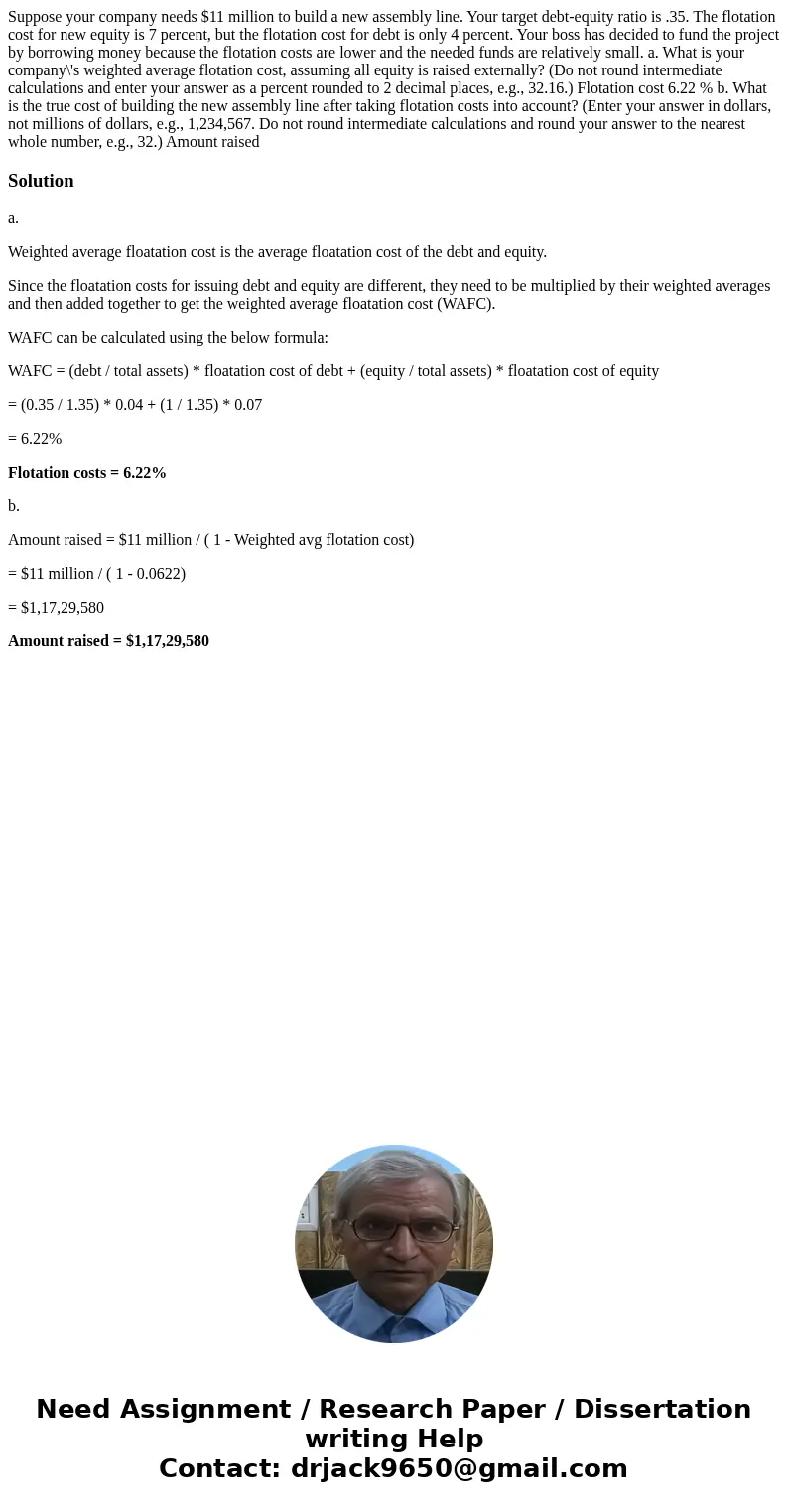Suppose your company needs 11 million to build a new assembl
Suppose your company needs $11 million to build a new assembly line. Your target debt-equity ratio is .35. The flotation cost for new equity is 7 percent, but the flotation cost for debt is only 4 percent. Your boss has decided to fund the project by borrowing money because the flotation costs are lower and the needed funds are relatively small. a. What is your company\'s weighted average flotation cost, assuming all equity is raised externally? (Do not round intermediate calculations and enter your answer as a percent rounded to 2 decimal places, e.g., 32.16.) Flotation cost 6.22 % b. What is the true cost of building the new assembly line after taking flotation costs into account? (Enter your answer in dollars, not millions of dollars, e.g., 1,234,567. Do not round intermediate calculations and round your answer to the nearest whole number, e.g., 32.) Amount raised 
Solution
a.
Weighted average floatation cost is the average floatation cost of the debt and equity.
Since the floatation costs for issuing debt and equity are different, they need to be multiplied by their weighted averages and then added together to get the weighted average floatation cost (WAFC).
WAFC can be calculated using the below formula:
WAFC = (debt / total assets) * floatation cost of debt + (equity / total assets) * floatation cost of equity
= (0.35 / 1.35) * 0.04 + (1 / 1.35) * 0.07
= 6.22%
Flotation costs = 6.22%
b.
Amount raised = $11 million / ( 1 - Weighted avg flotation cost)
= $11 million / ( 1 - 0.0622)
= $1,17,29,580
Amount raised = $1,17,29,580

 Homework Sourse
Homework Sourse